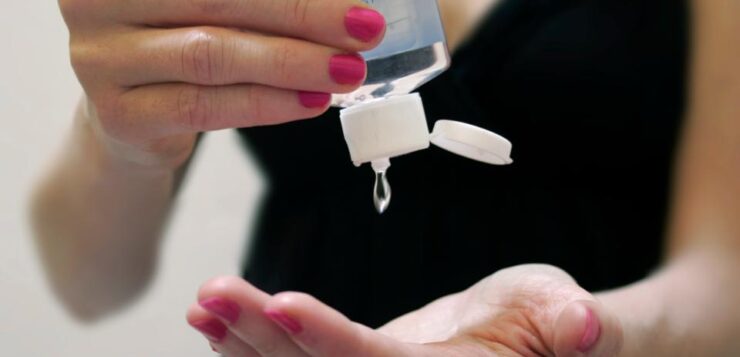COVID-19, aka Coronavirus, is wreaking havoc on more than our physical health. It is impacting our mental health as people are lining up in stores to buy essentials to prevent the virus from spreading or taking hold in the first place. Nielsen data shows people are buying N95 respirator masks, hand sanitizer, oat milk, nutrition bars, and more as coronavirus spreads.
Some facts: First, the N95 mask is mainly for use if you already have the virus to keep it from spreading and many have argued that coronavirus is smaller than the 0.3 micron filter rating of the mask and thus, not that helpful, for people outside of healthcare. In fact, the U.S. Surgeon General wants consumers to stop buying masks
Second, the Center for Disease and Prevention (CDC) states that washing your hands with soap and water is superior to alcohol-based hand sanitizers. However, that has not stopped the near-panic rushes on Costco, Walmart, and Amazon. Pretty much every store is sold out of gel-based hand sanitizers.
I braved the elements (that is, all the panic-mode folks) today and went to see if the news media was giving me the true skinny on these shelf-emptying consumers. They are telling the truth. Lots of empty shelves at the stores I visited.
So, I did what any good Forbes lifehack contributor would do — I read the ingredients on my empty bottle of hand sanitizer, decided I can make this stuff and so can you.
If you can find the ingredients, that is. Aloe gel and isopropyl alcohol are pretty much all there is to it. These were both sold out at stores as well. The ratio is roughly two-thirds cup of rubbing alcohol and one-third cup aloe vera gel or liquid, but many of the gels are already made with 60 percent alcohol solutions in them, so I’d start with less than two-thirds of a cup of alcohol in my mix, especially if you have a common 91 or 99 percent ratio that you have purchased.
I’m grateful for reader comments, so I want to fix and clarify my mix suggestion above. There are many aloe vera products on the market. I am in the Seattle area and most of those products are sold out. Shelves truly are empty. The aloe vera gel that I purchased from Rite Aid already contained alcohol at 60% level, so my formula above is based on that. If you purchase 100% Aloe Vera juice or a product that has no alcohol in it, then your formula would change. Also, I moved the alternative mixes to the end of the post to keep things focused on what to do now, during this virus outbreak. I stated that in “normal” times I would be willing to use an alternative mix.
As I say in this post, soap and water is superior to alcohol-based gels, since they do not eliminate all types of germs. I’ve read most of the CDC’s guidelines and the 25-plus additional academic resource articles. These gels can help so if you cannot find one in your area, either order from Amazon or make your own, but do the math, as one reader graciously provided:
For example, if someone uses a bottle of 90% alcohol and a bottle of pure aloe vera gel for the ingredients, they have to use at least 2 parts alcohol to 1 part aloe vera to produce a CDC approved product. The common formula with 2/3 cup of 90% alcohol plus 1/3 cup pure aloe vera produces a 60% alcohol concentration.
For the Coronavirus, if you do not have access to soap and water, then stick with the CDC recommendation to make sure you meet or exceed 60 percent alcohol solutions in your hand sanitizer (most do). You can read the CDC: Show Me the Science – When & How to Use Hand Sanitizer in Community Settings.
You might also want to read this detailed explanation from the CDC: Interim Guidance: Get Your Household Ready for Coronavirus Disease 2019 (COVID-19).
With common sense precautions, and reading these documents from the CDC, you can avoid the paranoid hype and stay well. And avoid buying hand sanitizers from the black market.
Previous final note on March 5: Just to be super clear and to confirm that I am advocating the same as the Center for Disease and Prevention (CDC) which states that washing your hands with soap and water is superior to alcohol-based hand sanitizers. Those little portable squeeze bottles of gel do come in handy when you cannot wash with soap and water, however. People who do not read to the end have been misquoting me and I want to clear that up, with soap and water.
New note on March 6 (info moved from above): However, this little bit of research led me to ask – is there a more natural hand sanitizer that can do the job and not make me smell like a hospital ward? Yes, dear readers, there are quite a few do-it-yourself types out there trying to crack this code. During normal times, I am going to try some of these natural mixes from Mom.com — for homemade hand sanitizer recipes: 5 Homemade Hand Sanitizers. I am also mixing up a hybrid version of my own based on Castile soap (1 tsp), a few drops of tea tree oil, and water, for my everyday use when I am out in the field. Smells nice, anyway.
Follow me on Twitter or LinkedIn. Check out my website.

I’m a Tech and Productivity guy. Do you have #lifehacks, #DIYtips, #HowTO ideas? Click the little «House» icon below to get to my website where you can submit ideas (via a Google spreadsheet). I’d love to hear from you. Thanks for reading and connecting. Sign up for my Tech Tips email. You can find me at the LinkedIn, Facebook, and Twitter link buttons, too. I still also cover a bit of my old beat on 3D printing, hardware, software, and mobile apps, as well.





